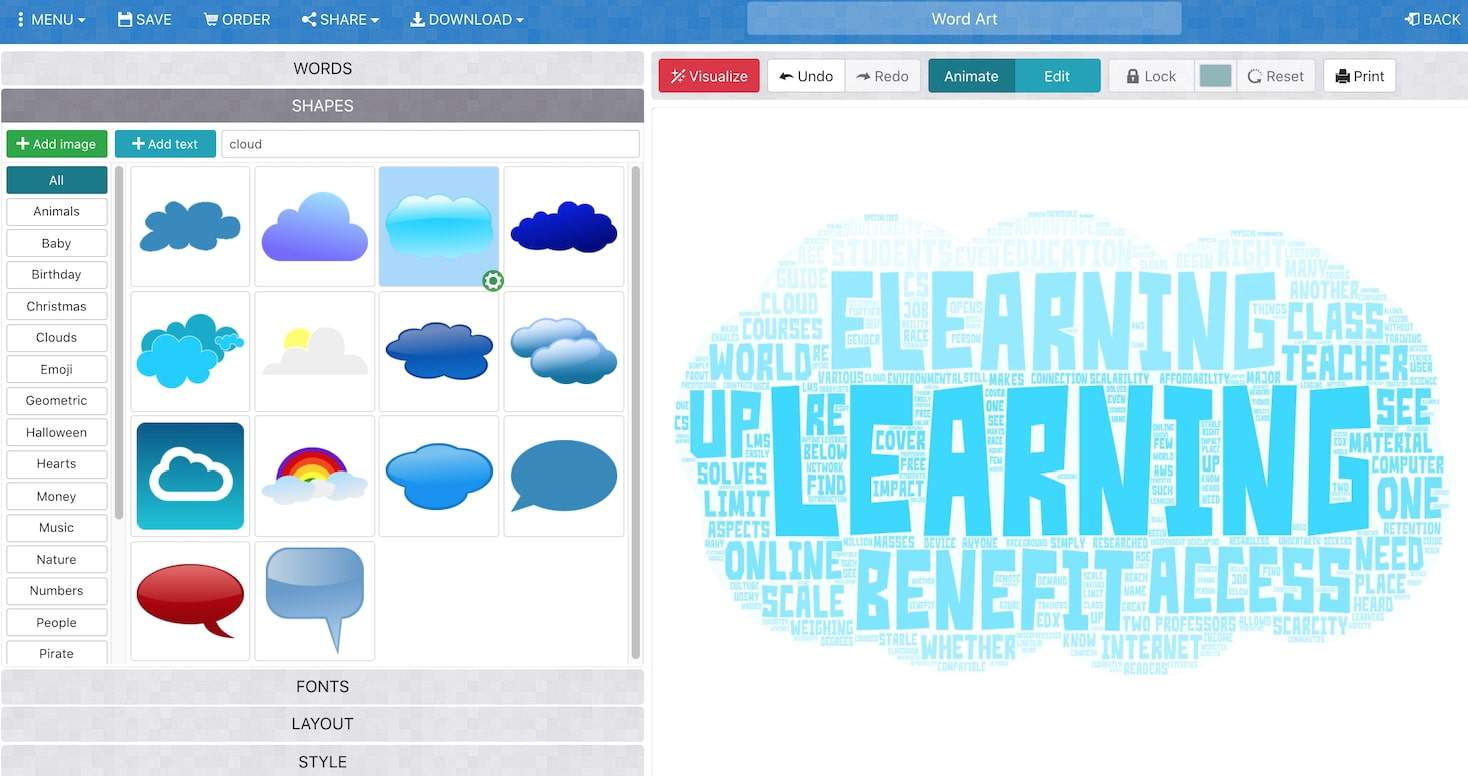

- WORD CLOUD GENERATOR FREQUENCY INSTALL
- WORD CLOUD GENERATOR FREQUENCY FULL
- WORD CLOUD GENERATOR FREQUENCY CODE
- WORD CLOUD GENERATOR FREQUENCY WINDOWS
You can download the notebook on GitHub to get the full code. You might need to repeat facecolor in savefig(). Plt.savefig(filename+'.png', facecolor=facecolor) In addition, pad=2 allows us to set padding to our figure. In our code, they’re equal as we previously set WordCloud(width=1000, height=600). This is the size of the figure that can be larger than the word cloud itself. We’re creating a 1000 × 600 px image so we set figsize=(10,6). Plt.figure(figsize=(10,6), facecolor=facecolor) Min_font_size=10).generate(comment_words) Wordcloud = WordCloud(width=1000, height=600, List_count.sort(key=lambda i: i, reverse=True) You can set comment_words and then use the WordCloud() function.īy the way, if you want to get a list of the most frequent words in a text, you can use this Python code: csv file but from a list of words only, you don’t need this part. In the most simple ways, you copy/paste text into a word cloud generator and. If you’re generating a word cloud not from a. It is a graphical representation or word frequency that presents a picture. Here we convert each val (lyric line) to string, split the values (words), and convert each token into a lowercase. Add NaN values to the stop list if your file or array contains them. We’ll create a word cloud in several steps. csv file:įor plotting, we’ll use the first column ( data) with lines from song lyrics.
WORD CLOUD GENERATOR FREQUENCY CODE
On the second line in your Jupyter notebook, type this code to read the file: csv file, which you can download on Kaggle ( nightwish_lyrics.csv). We’ll create a word cloud showing the most commonly used words in Nightwish lyrics, a symphonic metal band from Finland. You need the last line - %matplotlib notebook - to display plots in input cells. In the first line of the notebook, import all the necessary libraries:įrom wordcloud import WordCloud, STOPWORDS This will automatically open the Jupyter home page at Click on the “New” button in the top right corner, select the Python version installed on your machine, and a notebook will open in a new browser window. “wordcloud”) and open Jupyter Notebook by typing this command in your terminal (don’t forget to change the path):Ĭd C:\Users\Shark\Documents\code\wordcloud
WORD CLOUD GENERATOR FREQUENCY INSTALL
Pip install numpy scipy matplotlib ipython jupyter pandas sympy nose wordcloudĬreate a folder that will contain your notebook (e.g. Word clouds are typically used as a tool for processing, analyzing and disseminating qualitative sentiment data. A visualisation method that displays how frequently words appear in a given body of text, by making the size of each word proportional to its frequency. To get other tools, you’ll need to install recommended Scientific Python Distributions. A word cloud, or tag cloud, is a textual data visualization which allows anyone to see in a single glance the words which have the highest frequency within a given body of text.

WORD CLOUD GENERATOR FREQUENCY WINDOWS
You can download the latest version of Python for Windows on the official website.

Words are listed by their frequency (weight) in the widget. Word Cloud displays tokens in the corpus, their size denoting the frequency of the word in corpus or an average bag of words count, when bag of words features are at the input of the widget. Selected Word: Selected word that can be used as query in Concordance. Corpus: Documents that match the selection.


 0 kommentar(er)
0 kommentar(er)
